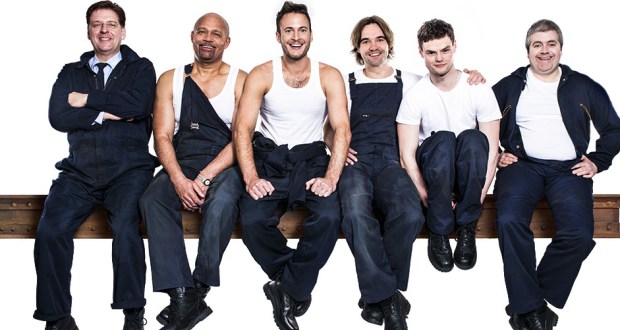
The Full Monty is a stage adaptation of the 1997 film of the same name about a pair of unemployed steelworkers in a Yorkshire ravaged by the Thatcher government. In a desperate attempt to raise money for child support, they pull together a ragtag group of unassuming men to strip at the local pub. The play, which is currently running in the Gaiety Theatre, was first performed in 2013 in Sheffield and was written by Simon Beaufoy who wrote the original screenplay. This, however, is a dizzying concept, considering how abysmal this play is in comparison to one of the feelgood hits of the 1990s.
First, a couple of caveats. It goes without saying that the play must be taken as its own work of art and comparisons to its source material must be kept at bay as much as possible. However, at certain points comparisons must be drawn, to demonstrate how pathetically audacious this adaptation is. Also, this reviewer is well aware that a 22-year-old male in 2018 is probably not a member of the key demographic at which this 1990s revival was aimed. Having said that, the original The Full Monty is a fantastically heart-warming and hilarious tale by most people’s metrics.
So where does the current incarnation, produced by David Pugh & Dafydd Rogers, go wrong? Almost everywhere. To begin with the positive, the stage design for this show was fantastic and clearly took a lot of time, investment and creativity to pull off. But that is the last praise this piece has to offer.
This play takes an exceptional 1990s classic and breaks it down to the lowest common denominator, turning the original’s joyful resistance in bleak circumstances into a garish pantomime, complete with flat slapstick, over-the-top performances (including the obligatory turn to the audience after each punchline) and rushed plotlines. This tonal shift takes every last ounce of soul out of this story. While I entered the play fearful that this would be a beat-for-beat regurgitation of the film, I left wishing it had been.
The only solid performance comes from Torchwood’s Kai Owen as Dave. It was fine. The worst, it pains me to say, is that of the protagonist’s son. The boy could not project and was thus reduced to screaming every single one of his lines, eviscerating any possible emotional gravitas from the heartfelt exchanges between father and son.
Direct comparisons to the original are useful at this point, for two reasons. The first is to illustrate the play’s grotesque approach to the thematic concerns of the source material. Peter Cattaneo’s film was a story of something positive coming from something bleak. The characters were hapless and blundering, but charming and real. This production chooses instead to morph them into imbecilic caricatures.
Similarly the comedy, though irreverent and dark, also leant itself to a sympathetic story. Here, the play’s attempts to deliver jokes that are the same in their premise as those in the film fall worryingly short, in an exercise in how to miss the point entirely. One key example comes to mind. Early on in both the film and the play, Lomper the security guard, a closeted gay man who feels trapped in his dead-end job and by his incapacitated mother, attempts suicide. The film version of this scene depicts Lomper flooding his car with gas before being saved by the Dave in an anxious moment. Comic relief immediately arrives, admittedly in a dark way, when Lomper gives Dave some backchat afterwards and Dave throws him back into the suffocating car. Though ostensibly dark, there is no real threat in the moment when Dave closes the car door.
Compare this with this same scene in the play. The car method is replaced with hanging. We watch Lomper’s body dangle high above the stage for what feels like a long time before help arrives. This time when Lomper gives his expected backchat, Dave physically pushes him off a gantry and leaves him swinging by the neck before us for a long time. This wasn’t shockingly funny. This was awkwardly shocking.
The second reason for comparison is to show how the play transforms fluid source material into formal nightmare. Where the original gave us a story that culminated in a touching display of the little victories, the opening hour of the adaptation is monotonous slapstick and the post-interval hour is littered with a couple of out-of-place impassioned speeches, which somehow manage to be both rushed in terms of writing, and drawn out in length.
All in all, The Full Monty is a poorly performed and shoddily constructed pantomime concerned only with phoning in nostalgia for a 20 year-old film. It revels in tasteless humour and relies on an audience who do not see the hypocrisy in their cries of “take it off” and “get it out stretch”. Enter the Colosseum and laugh with the mob at a man’s fatness for €41/51 if you wish, but if you want anything resembling the pleasure of the play’s namesake, don’t bother. But hey, this thing got a standing ovation, so what do I know? The Full Monty runs until October 6th.
Correction: 21:55, October 2nd, 2018
An earlier version of this article incorrectly stated that this play took place in the Gate Theatre. In fact, it took place in the Gaiety Theatre.






